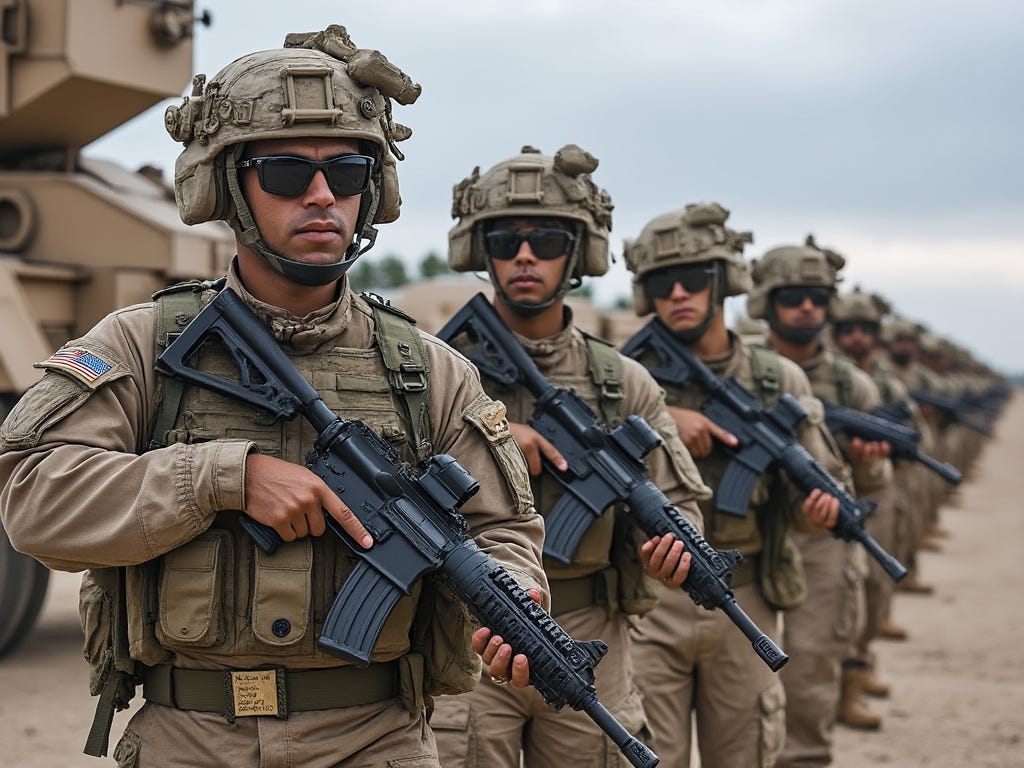U.S. Military Deployment to the Middle East: New Moves in an Old Game
U.S. Troop Surge in the Middle East: A Tactical Move or Prelude to Escalation?
Once again, the U.S. is gearing up for a show of military strength in the Middle East, sending thousands of troops and aircraft to the region amid fears of an impending all-out war, as Israel ramps up its military actions against Hezbollah targets in Lebanon. According to reports, the U.S. Pentagon confirmed this deployment would bolster the current forces, including fighter jets and personnel, with the goal of protecting Israel and stabilizing U.S. interests in the region.
This latest deployment has been labeled "defensive," but anyone with a basic grasp of geopolitics might raise an eyebrow. The U.S. government claims this move is purely about protecting key assets, but we’ve all seen this movie before. Troops land under the banner of "defense," and soon after, escalation follows. As the world watches this military parade, it’s hard not to wonder if this is a calculated chess move or yet another round of muscle-flexing.
Same Conflict, Different Year
The announcement comes amid a backdrop of intense Israeli military actions in southern Lebanon. Ground operations against Hezbollah and escalating tensions with Iran-backed militants have painted the skies of northern Israel with smoke from Israeli artillery fire and airstrikes. Israel's latest invasion into Lebanon isn't just about security; it’s a deliberate power play that further entangles the U.S. in one of the most geopolitically charged regions on the planet.
The Pentagon revealed that this deployment would double the airpower in the region, with jets such as F-15E, F-16, and F-22 fighter jets staying in the theater longer than initially planned. It’s all a part of a "show of strength" strategy—because nothing solves tension quite like adding more firepower into the mix.
The move may temporarily stabilize the situation or at least provide Israel some breathing room as it tries to neutralize Hezbollah. Still, history suggests that such deployments can fan the flames, provoking more violence and pushing the region closer to full-scale war.
Why More Troops Won’t Solve the Problem
What’s at stake isn’t just Israel’s security but U.S. credibility and interests in the region. With oil-rich assets and strategic military bases in play, the U.S. has made it clear that it won’t back down. However, after years of similar interventions, the question remains: Is this really the most effective solution?
Deploying troops is an all-too-familiar strategy in U.S. foreign policy, one that rarely delivers long-term peace. We’ve seen this play out over the decades in Iraq, Afghanistan, and now once again in Lebanon. More troops, more firepower, more conflict—it’s a vicious cycle that almost always ends with more instability.
Perhaps it’s time for a different approach—one that focuses on diplomacy and de-escalation. Yet, in the current climate, such notions seem far-fetched. After all, the U.S. military isn’t known for backing down once it has boots on the ground.
Is There a Way Out?
The reality of the situation is grim. With Hezbollah vowing to keep fighting, Israel preparing for a broader ground invasion, and the U.S. now doubling down on its military commitment, the chances for peace seem slim. But maybe, just maybe, there’s a path forward that doesn’t involve more violence.
The problem is, diplomacy requires patience, nuance, and a willingness to compromise—qualities that are often in short supply when war drums are beating. Until then, it looks like the U.S. will remain caught in the middle of this never-ending chess game, moving pieces around but never quite achieving checkmate.



